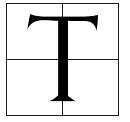Photos of the Far Side of the Moon
How did the Soviet Union achieve this milestone?
 The Moon is tidally locked to the Earth, which means that it is always the same half that faces the Earth. Because of this, the far side of the Moon thus remained mysterious for thousands of years and out of reach until the beginning of the Space age.
The Moon is tidally locked to the Earth, which means that it is always the same half that faces the Earth. Because of this, the far side of the Moon thus remained mysterious for thousands of years and out of reach until the beginning of the Space age.
The Moon’s diameter is 3,476 km, yielding a lunar area of about 38 million square kilometers in size. An additional nine percent of this area was uncovered by exploiting lunar libration — slight changes in perspective that make the Moon “wobble.” As such, an area roughly equivalent to the size of South America was almost completely unchartered.
The Moon orbits around the Earth on a slightly elliptic orbit, with an average distance of roughly 384,400 km. The closest and farthest distances between the Moon and the Earth differ by approximately fifty thousand kilometers. Reaching the Moon, even with a small spacecraft, is a remarkable challenge and it was at the centre of the Space Race.
The Space Race begins
The Cold War, which started right after the Second World War, is symbolized by the nuclear arms race, numerous proxy wars, espionage, and general technological competition. Tensions between the Eastern and Western Bloc led to the development of more destructive weapons, improved telecommunications, and brought humankind into space. While space exploration was first seen as a convenient side benefit of the development of ballistic rockets, it soon became one of the central rivalries between the Soviet Union and the United States.
The inauguration of the Space Race took place with the launch of Sputnik 1 in October 1957. This first man-made object that orbited the Earth shattered the ostensible technical advantage of the West. Similar to the development of the atomic bomb, the surprise of this Soviet achievement was further compounded with the utter destruction of a large portion of the Soviet Union’s industry. It was hard to imagine that the latter would support the development of high technology. The ripples of Sputnik’s impact led to the restructuring of the emergent US space program and eventually led to the formation of NASA.
The Red Moon and the early “Luna” space program
Mikhail Tikhonravov, a Soviet rocket engineer, had already hinted towards the possibility of reaching the Moon in 1951. In the communist youth’s newspaper, he reasoned that humans could fly to the Moon within the next ten to twenty years. Tikhonravov wrote A report on an artificial satellite of the Earth in 1954 in which he outlined more concrete technical aspects of a spacecraft capable of reaching the Moon.
Together with the chief engineer Sergei Korolev, Tikhonravov wrote another proposal, On the launches of rockets to the Moon, which outlined the Soviet Lunar program. This was the first program to outline the missions beyond the Earth's proximity and represented a formidable technical challenge. Scientifically, successful missions to the Moon would offer unprecedented insights into the origins of the Moon-Earth system.
The program proposed several different missions. Impactors were to hit the moon, while orbiters and flyby missions were to collect the data from the distance. Even more ambitious were the soft landers, followed by the rovers and sample return missions. Launches were secret and only the successful ones were given the “Luna” (Russian for “the Moon”) designation and revealed to a broader audience. This selective reporting of attempts skewed the perception of the ease with which the Soviets were approaching the exploration of the Moon.
Nonetheless, several successes arose from the program. The “First Cosmic Ship” — later named Luna 1 “Dream” — resembled the Sputnik 1 but carried several scientific instruments (magnetometer, meteoroid, cosmic ray, and gas component detector). Its mission was to impact the near side of the Moon. Tracking revealed that it would pass near the Moon but would miss it. Besides measuring the Van Allen radiation belts, it measured the solar wind (flow of ionized plasma emitted from the Sun) for the first time. It also detected no significant magnetic field near the Moon and a general lack of micrometeorites.
The second successful mission of the Luna program was the “Second Cosmic Ship” (later Luna 2), which carried similar equipment as Luna 1. It successfully impacted the Moon as the first man-made object to do so, while transmitting the data until less than sixty kilometers above the Moon surface. Its measurements indicated that there is a limit for the reach of the Earth’s plasmasphere and that the solar wind exists also outside the Earth’s magnetic field. The next milestone of the program was to send back the photographs of the Moon. For the first time, the far side of the Moon was to be revealed.
Luna 3 spacecraft
The “Automatic Interplanetary Station” that was later named Luna 3 was a complex machine. It weighted nearly three-hundred kilograms and was roughly cylindrical (about 1.3 m in height and between 0.95–1.2 m wide). The sealed container maintained the pressure and temperature for the optimal performance of the equipment.
The spacecraft had an imaging system, transmitter, solar cells, electric batteries, a cosmic ray detector, and a micrometeoroid detector. It sported a three-axis stabilization system that oriented the probe for taking images and radio transmission. The spacecraft oriented itself by locating the Sun, the Earth, and the Moon. The system was developed by the team of a Soviet physicist and engineer, Boris Rauschenbach, who designed many subsequent space-flight control systems.
The camera module of Luna 3 — called Yenisey 2 — had two camera systems with different focal lengths, which allowed both close-up and coarser images. Cameras were fixed and their orientation was determined by the position of the spacecraft. The photography system autonomously took pictures, developed the film, and scanned it at a resolution of 1,000 lines by the cathode-ray television system. Curiously, the film used in the photography was originally from CIA spy balloons — made by General Mills, a company known for producing Cheerios — used in the Project Genetrix. This photography film had the required radiation hardening and temperature stability necessary for the mission.
The design of electronics for Luna 3 made extensive use of transistors in place of vacuum tubes. While it was Explorer I that used the transistors in a satellite for the first time and Sputnik 3 already used transistors in its electronics, the transistors formed the basis of Luna 3's. The transmission speed stood at fifty or 0.8 lines per second for fast and slow mode, respectively.
The mission and its impact
The launch took place on October 4, 1959, exactly two years after Sputnik I. The Department of Applied Mathematics of Steklov Institute planned the trajectory as a highly excentric high-Earth orbit (48,280 km by 468,300 km), thus omitting any orbit insertion maneuvers. The trajectory made use of the Lunar gravity assist, which made the orbit elliptical.
Soon after launch, problems began. The probe started to overheat. Scientists turned off several systems, which alleviated the overheating. Two days later, on October 6, the spacecraft passed the Moon above the south pole. The following day, Luna 3 was above the sunlit far side of the Moon and photography began. Within forty minutes, the spacecraft took twenty-nine pictures at different exposure settings. This photography took place at altitudes between 65,200 and 66,700 km above the Moon’s surface.
After the session ended, the attempt to send the pictures to the Earth failed. In this attempt, a single picture of poor quality was received. A more successful transmission took place as the spacecraft sped towards the Earth. On October 19, the spacecraft was near the Earth and above the Soviet Union. To improve the reception of the transmission, radio silence was ordered over the Black Sea. Finally, seventeen pictures were received, covering about 70% of the far side of the Moon. Soon after, the Soviet authorities released the first-ever images of the Moon’s mysterious side.
The far side of the Moon looks quite different from the familiar near side. It is mountainous and sparkled with craters of various sizes, and has fewer lunar maria (darker areas of volcanic origin) compared to the near side. This apparent asymmetry between the near and far sides of the Moon is crucial for the understanding of the lunar origin, and supports the so-called “giant-impact hypothesis.” This hypothesis suggests that the Moon formed after a Mars-sized object impacted the Earth’s predecessor. The impact debris subsequently coalesced into the young Moon.
The scientific and historical impact of the mission was profound. It showcased the prowess of the Soviet space program to the world. The mission and the probe were technically refined and went far beyond Sputnik’s ones, merely two years before. Television stations and printed media distributed the images of the far side of the Moon across the globe, forever cementing the mission into the history of space exploration.
The first lunar atlas was released in 1960. Because the Soviets were the first to image the far side, their academics had the opportunity to name the features of the lunar surface: Tsiolkovsky crater, Mare Moscoviense(“Moscow sea”), and Mare Desiderii (“Sea of Dreams”, named after Luna 1), to name a few. Subsequent high-resolution images led to the renaming of some of these features.
Further exploration
Several missions followed Luna 3, carried-out by both the US and Soviet Union. The race for the first human landing on the Moon accelerated after Kennedy’s famous speech in 1961. Ranger 7 — launched in 1964 — was the first American spacecraft to acquire images of the Earth’s satellite. Later, the Soviets achieved the first soft landing on the Moon with Luna 9. A few months later, the spacecraft of the American Surveyor program landed on the lunar surface, tiling the road towards landing a man on the Moon.
One of the most spectacular moments of space exploration occurred when the crew of Apollo 8 entered into orbit around the Moon. For the first time, humans could see a portion of the lunar far side. Breathtaking pictures from this mission also signaled an approaching end of the race for the first human landing on the Moon. As Neil Armstrong stepped on the lunar surface, the Space Race came to a symbolic end.
The Space Race — born out of the pursuit of mutual destruction — spawned some of the most remarkable achievements of humankind. While politics fueled the Space Race, the accomplishments of the era — like Luna 3’s ones — are of immense importance as they broaden the horizon of our knowledge. After the climax of the Space Race, space exploration became more collaborative and less competitive. Today, as the pursuit of space is becoming cheaper with the accelerated entry of private space companies, we might see exciting developments in our efforts to reach deeper into space.
Sources:
Harvey B., & Zakutnyaya O., Russian Space Probes [Springer-Praxis (2011)]
Siddiqi A.A., Beyond Earth [NASA History Division (2018)]
Harvey B., Soviet and Russian Lunar Exploration [Springer-Praxis (2007)]
